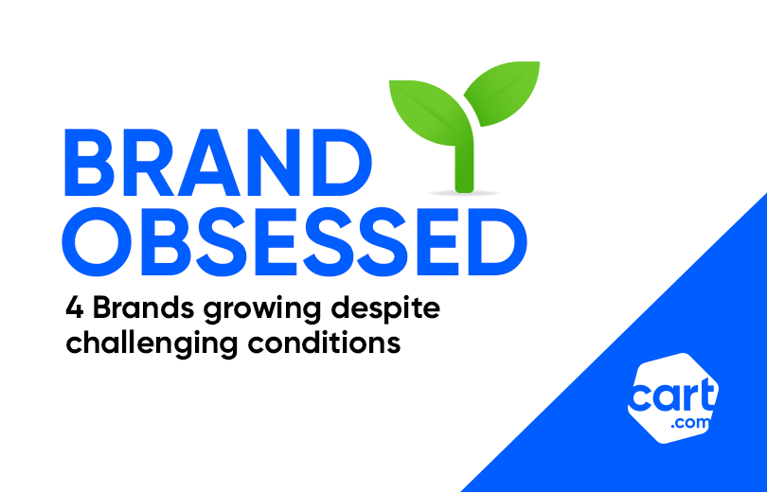Search engine optimization (SEO) is critical in retail marketing. Brands looking to improve visibility and traffic must have an SEO strategy in place. Think of SEO like this: Consumers looking to shop at a brick-and-mortar store need an address and directions to get there. In ecommerce, search engine optimization acts as a guide (through keywords and phrases) to help the right customers find your store and retail products online.
Retail SEO helps brands rank higher in search engine results, ideally on page one. It also elevates the user experience, making it easier for customers to find you online. SEO can establish trust – when your keywords are tailored to what you have to offer, it supports your credibility.
Before you dive into SEO, it’s crucial to understand that SEO requires a carefully crafted strategy. In other words, there are definite do’s and don’ts. As you launch or expand your retail SEO efforts, read this quick guide to find out the ten things you should or shouldn’t do.
SEO in retail marketing
SEO is not a new concept. Businesses determine words and phrases that potential customers use to find a product or service. What makes SEO more complex are the guidelines, technicalities and competition around it. For example, changing algorithms, quality of content, technical optimizations and the saturation and competition for certain keywords. Plus, there has been a crackdown on spammy SEO tactics and low-quality efforts.
As a brand, you should want to focus on getting the right traffic and audience. That’s what drives conversions. SEO lets you reach customers who are actively searching for your products. For example, let’s say a customer is looking for vitamin C serum for their skin. However, they have distinct needs: their skin is sensitive. They will likely search for “vitamin C serum for sensitive skin.” The search engine results are going to reflect this search, featuring brands that optimize product listings and other content with keywords like "best vitamin C serum," "for sensitive skin," and "gentle vitamin C skincare."
Now the customer clicks on a high-ranking result, which might take them to a blog post by a skincare brand discussing the benefits of vitamin C serums for sensitive skin. The blog includes links to product pages and detailed information on ingredients, benefits and customer reviews. Seeing this relevant information builds trust, and after reading through the content, the customer decides to try the product and makes a purchase.
The beauty brand in the example probably had excellent SEO in place – and they followed industry best practices. Here are some of the top things brands practicing successful retail SEO strategies should or should not do.
SEO do’s for retail marketing and ecommerce
DO conduct thorough keyword research: The goal is to identify high-intent keywords relevant to your retail products. This might mean looking at competitor sites to see what keywords they use, using Google to see what people are asking or searching for or investing in a tool that helps. Some of the most notable tools include Google Keyword Planner, Ahrefs, Semrush and Moz. You can even conduct research using free tools like Google Trends to search popularity, volume and which keyword is better. If you have time constraints or require more expertise, consider using an agency to do things such as create an SEO strategy, optimize your content and identify and track keywords and rankings.
DO optimize product pages with relevant content: Product descriptions give you an excellent opportunity to implement SEO. Infuse your titles descriptions with unique, descriptive language naturally.
DO focus on technical SEO: Technical SO improves your website’s structure and performance, which makes it easier for search engines to crawl and index your content. To optimize, you must look at elements like site speed, mobile-friendliness, URL structure and HTTPS connections. Each of these components impacts your site rankings. By conducting regular audits, you can identify broken links, duplicate content and unoptimized meta tags. The more you are able to fix issues and address technical factors, the better your chances of being discovered and ranked by search engines.
DO utilize customer reviews and user-generated content (UGC): Customer reviews and UGC add credibility while boosting search visibility. Not only do they give you fresh and authentic content that search engines favor, but they also signal a brand’s relevance and audience engagement. UGC often reflects keywords that customers naturally use and helps you rank for specific search terms. Brands benefit from encouraging reviews and showcasing them to further enrich their SEO efforts.
DO build high-quality backlinks: Backlinks are a part of a strong SEO foundation. They signal trust and authority. Brands should look for ways to form industry partnerships that provide backlinks from sites relevant to their industry. It’s crucial to prioritize quality over quantity.
SEO don’ts for retail marketing and ecommerce
DON’T keyword stuff: Have you ever seen content and know it’s focused on a keyword? For example, something that reads “Buy our comfortable, affordable, stylish men's sneakers! These men's sneakers are the best men's sneakers for anyone looking for men's sneakers that offer great comfort, style and durability in men's sneakers.” Keyword stuffing can actually lead to lower rankings and poor experiences. Instead, look at integrating keywords naturally and in a way that provides valuable information.
DON’T overlook mobile optimization: According to Adobe Analytics, mobile shopping expected to drive 53 percent of online sales during 2024 holiday season. With mobile’s popularity, search engines prioritize mobile-friendly sites that meet user expectations. When you overlook mobile optimization, you risk lower search engine rankings. Dissatisfied users may contribute to a higher bounce rate and lower conversion rates. Making the mobile experience seamless lets you stay competitive and increases your chances of ranking well.
DON’T duplicate content: Identical descriptions and duplicate content harms SEO as it can fail to differentiate. Unique content is essential for meeting intent and ranking in relevant search queries. It also improves the customer experience, leading them to the right products and providing information that drives informed decisions. Unique content is also critical for standing out in a crowded category.
DON’T ignore local SEO: Whether your intent is to attract nearby customers or optimize for brick-and-mortar locations, local SEO is essential for driving more targeted and relevant leads. It can also decrease competition. Rather than competing on a larger or global scale, you compete only against nearby competitors. You are also more likely to attract customers who will visit and make purchases.
DON’T use black hat SEO tactics: Black hat tactics use unethical techniques (like paid or manipulative links, misleading redirects and hidden text) to improve your search engine rankings. When revealed, these techniques can cause your website to be de-indexed, or you’ll see a significant drop in rankings and traffic. Overall, it hurts your brand’s reputation, credibility and user experience.
Cart.com helps you improve your retail SEO strategy
Today's SEO strategies are more than keywords and backlinks; it involves ratings, technical optimization and commerce-centric content that lets your brand win with SERPs. Our team takes an in-depth look at your authority, online sentiment and existing content to provide an end-to-end SEO strategy that covers keyword analysis, tracking, link building, schema markup, site health and more. Contact us today if you're ready to bring in more quality leads.

Subscribe to our emails for the latest industry insights!
By entering your email, you agree to receive marketing emails from Cart.com





